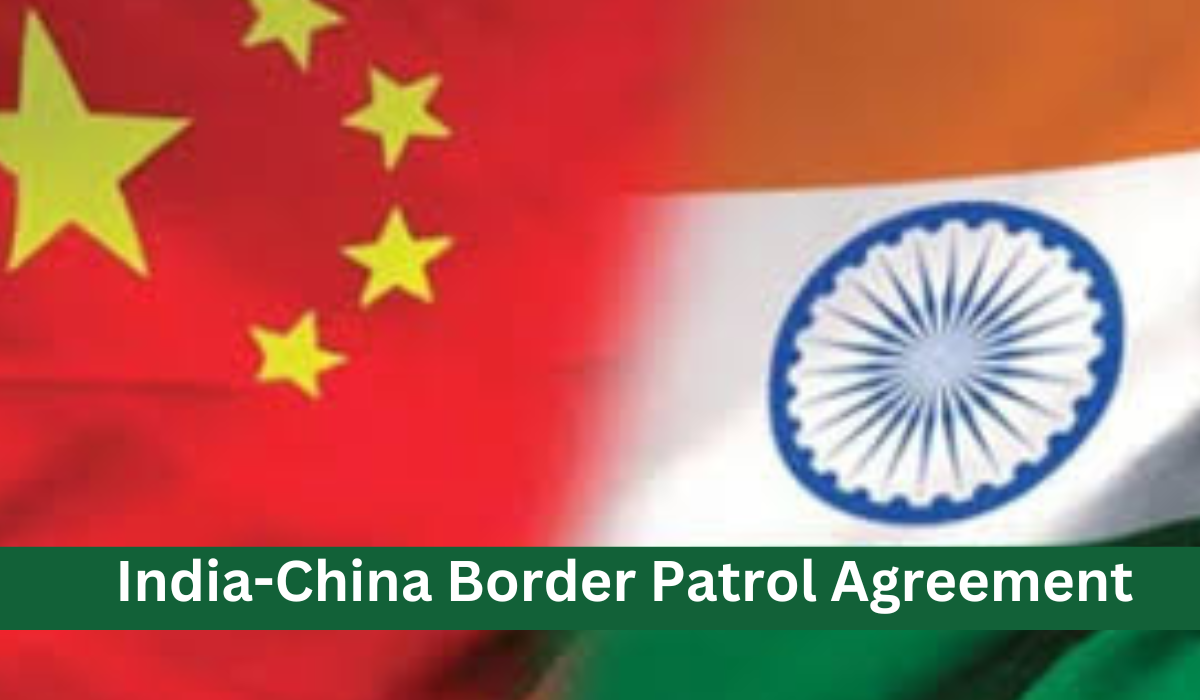In a significant diplomatic breakthrough, India and China have reached an agreement to resume patrolling along the Line of Actual Control (LAC), potentially easing tensions that have persisted since their military standoff in May 2020. This agreement was confirmed by Foreign Secretary Vikram Misri, and later elaborated on by External Affairs Minister S. Jaishankar during the NDTV World Summit. The move marks a crucial development in the fraught relationship between the two Asian giants, offering the possibility of returning to more normalized border operations in the coming months.
The Importance of the Agreement
The LAC, the de facto border between India and China, has been a flashpoint for tensions for decades. However, the situation reached a critical point in June 2020 during the Galwan Valley clash, where both sides suffered casualties—20 Indian soldiers were killed, while Chinese casualties remain contested. Since that clash, both nations have stationed tens of thousands of troops in the region, with multiple friction points emerging along the LAC.
The new patrolling arrangement seeks to revert to the pre-2020 status quo, allowing Indian and Chinese soldiers to patrol the border as they did before the deadly face-off. This marks a significant step toward de-escalation, which could reduce the likelihood of military skirmishes in areas like Galwan, Pangong Lake, and Depsang. More importantly, it offers a roadmap for stability and a potential thaw in relations, which could pave the way for further diplomatic negotiations.
What Does De-escalation Mean?
The key takeaway from this agreement is the potential for de-escalation along the LAC, which has been a region of heightened tension for nearly four years. Since 2020, both India and China have deployed a massive military presence along the border, increasing the risk of confrontations. By agreeing to revert to the 2020 patrolling norms, both nations can lower the temperature at the border and reduce the risk of unintentional skirmishes or clashes that could spiral into more serious confrontations.
Reverting to these norms is particularly critical because it allows both countries to maintain a delicate balance at the border. It helps reduce the frequency of close military encounters, which can be particularly volatile given the historical mistrust between the two nations. Moreover, by scaling back troops and reducing friction, this agreement could lead to a significant lowering of tensions along the LAC, creating a more stable environment for both countries to engage in further dialogue.
Stabilizing the Border: A Key to Broader Relations
The significance of this agreement extends beyond just military implications. A stable LAC is a necessary precondition for both countries to engage in broader negotiations on their boundary disputes, some of which date back to the 1962 India-China war. Areas like the Depsang Plains, Demchok, and Pangong Lake have been sites of repeated friction, with both sides maintaining disputed claims and counterclaims over these strategic territories.
In particular, the Depsang Plains hold strategic importance for India due to their proximity to the Daulat Beg Oldie (DBO) airstrip and the Darbuk-Shyok-DBO road, which are crucial for military mobility and logistics. China’s presence in this region has been a major concern for India, and de-escalating tensions here is essential for maintaining control over these strategic assets. Similarly, areas like Hot Springs and Demchok, which are important for surveillance and border security, would benefit from a more stable patrolling arrangement.
This stabilization of the border would not only reduce immediate military tensions but also create a conducive environment for broader diplomatic engagement. As both countries have invested heavily in their military and border infrastructure over the last few years, this agreement would allow India to focus on strengthening its border defenses without the constant threat of imminent conflict. For China, stabilizing the border could reflect a strategic decision to manage its disputes with India while addressing other global concerns, particularly in light of its strained relations with other powers like the United States.
You May also Like!
- JKBOSE Class 12 Revised Syllabus 2024-2025: Download PDF
- India-China Border Patrol Agreement: A Step Toward Stability and Cooperation
- JKBOSE JKSOS Class 12th Date Sheet 2024 Annual Session
- OnePlus 13 Launch Date Confirmed: Design, Specs, and Features Revealed
- “People Ask Me Why Do You Still Work Like This…”: PM Narendra Modi
Building Confidence for Future Engagement
Perhaps one of the most significant aspects of this new arrangement is its potential as a confidence-building measure. Returning to the pre-2020 patrolling framework shows a mutual willingness on both sides to reduce hostilities and avoid further escalation. This move could signal a shift in both countries’ approach to the LAC, emphasizing dialogue and cooperation over confrontation.
Confidence-building measures are essential for fostering long-term peace and stability. For India and China, this agreement could lead to more frequent diplomatic engagements at higher levels, including possible interactions between Prime Minister Narendra Modi and Chinese President Xi Jinping at international forums. Enhanced dialogue at the leadership level could help ease tensions and allow both countries to address their broader concerns, from trade to regional security issues.
The agreement could also lead to a resumption of other bilateral initiatives that had been stalled since the 2020 clashes. These include joint efforts in trade, culture, and science, which could further improve relations. The importance of managing the border through mutual understanding and cooperation cannot be overstated, especially given that both nations are nuclear powers with vast military capabilities. The reduction of tensions in one of the most volatile border regions in the world could have positive ripple effects throughout Asia and beyond.
Political and Strategic Implications
For India, this agreement comes at a time when its strategic and military partnerships with other nations, particularly the United States, Japan, and Australia (through the Quad), have been growing. India’s ability to manage its northern borders with China in a peaceful manner would allow it to focus more on its other strategic priorities, such as maritime security and its influence in the Indo-Pacific region.
For China, stabilizing relations with India could provide much-needed relief as it deals with multiple international challenges, including its rivalry with the U.S. and tensions in the South China Sea. By reducing the risk of conflict on its western border with India, China can redirect its focus and resources toward other critical areas of concern.
In summary, the new patrolling arrangement along the LAC marks a significant step toward de-escalation and confidence-building between India and China. While challenges remain, the agreement opens up the possibility of further diplomatic engagement and a more stable, peaceful border, providing both countries with an opportunity to reset their relationship and focus on broader strategic goals.

